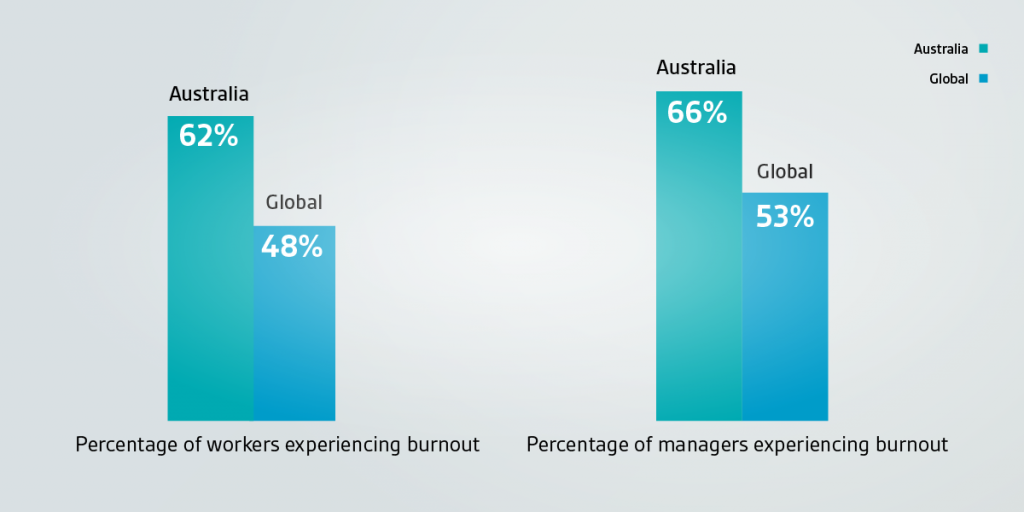The Christmas and New Year’s period generates myriad challenges for workforce managers and their teams. Customer demand soars as your customers and employees take advantage of their leave entitlements, and balancing business needs with employee well-being can become challenging.
Burnout especially has become a key conversation for workforce managers in recent years, with the 2022 Microsoft Work Trend Index revealing that 62% of Australian workers and 66% of managers experience burnout, surpassing the global average of 48% and 53%, respectively.
Effective scheduling and rostering during these times can prevent your organisation from worsening the situation in the coming months. Modern workforce management platforms do more than fill shifts; they align employee preferences with business demands to help you meet everyone’s needs as much as possible.

Forecast your business needs during peak demand
Accurate demand forecasting is vital during peak holiday periods like Christmas and New Year. These times often see unpredictable changes in customer behaviour, leading to massive changes in demand. Inaccurate forecasting can lead to understaffing, which impacts service delivery, or overstaffing, which increases costs.
Scheduling and rostering software analyses historical data and trends from previous peak periods and considers external factors and variables like seasonal promotions and local events. Using this information, scheduling and rostering software creates flexible rosters based on skills, availability, coverage, cost and preference, adjusting staff levels to meet dynamic needs. These platforms also monitor real-time changes to support workforce managers with staffing decisions to move beyond guesswork to data-driven planning.
Create rosters based on the skills required
You must incorporate a skill-based approach to rostering during peak demand to ensure operational efficiency and quality service. Relying on coverage alone can increase the burden on management and other staff. With a potential increase in casual staff or overtime utilisation, cost should also be a consideration. You might have hired more people to cover demand, but they may not have the same competency as someone more experienced or be able to operate efficiently in a variety of roles. As such, you must balance skills to manage the increased workload and meet customer needs.
Scheduling and rostering software enables workforce managers to match employee skills with specific job requirements. The software categorises staff based on qualifications, experience, and skill levels to identify the right person for each role during peak periods. It also allows quick roster adjustments in response to unexpected or late changes and helps identify budget constraints and exceptions, ensuring the business remains agile and responsive.
Assigning tasks that align with an employee’s skills enhances job satisfaction. Matching skill levels with suitable tasks reduces staff stress because people do not have to navigate situations they are unprepared for. Consequently, people will perform more confidently and efficiently, improving overall performance and customer satisfaction.
Manage and reduce overtime and overwork
In 2022, the Australian Bureau of Statistics reported that 34% of Australian workers typically worked extra hours or overtime. Excessive overtime and overwork, especially during peak periods like Christmas and New Year’s, can lead to burnout. For this reason, workforce managers must effectively monitor workloads to protect the workforce’s well-being.
Scheduling and rostering software provides real-time data on employee hours, enabling managers to spot overwork trends and prevent them. Features like automated alerts for approaching overtime limits allow for prompt schedule adjustments. Encouraging regular breaks and respecting off-duty hours, employee preferences and leave entitlements helps prevent fatigue and promotes wellbeing and engagement. Scheduling and rostering software factors in these elements so that you do not inadvertently roster people to work longer than they should.
Communicate with your team about their preferences
Communicating with your team about scheduling and rostering expectations is critical during peak demand like Christmas and New Year’s. Many people prefer to take time off over this period. You will need a clear understanding of each team member’s availability and preferences to create a schedule that balances business and employee needs.
Scheduling and rostering software gathers employee availability and shift preferences. People can directly add their availabilities and preferred shifts into the system, giving managers a clear view of overall availability. Scheduling and rostering software balances these preferences with business requirements. Algorithms generate rosters that meet operational demands while accommodating employee preferences. This automated process reduces the chances of errors and ensures managers consider employee preferences when creating rosters.
Enable self-service options
Self-service in scheduling and rostering software empowers people with flexibility and work-life balance by allowing them to manage their work schedules. This autonomy becomes particularly valuable during busy periods because it reduces the stress of communicating via email or instant messaging, where availability requests often get lost.
Self-service platforms also make it easier for people to manage their schedules and swap shifts. These platforms enable people to request shift changes from their mobile devices to send them to management, reducing administrative workloads for workforce managers.
Empowering employees with self-service tools increases employee satisfaction, engagement, and productivity while reducing errors and frustration for staff and workforce managers.
Conclusion
Workforce scheduling and rostering during busy periods like Christmas and New Year’s are essential for reducing stress across the team. By implementing demand forecasting, skill-based rostering, overtime management, clear communication and self-service options, your organisation can significantly alleviate the pressures typically associated with these times.
Scheduling and rostering provides the necessary support for effectively applying these strategies. The software maintains the balance of meeting business demands and prioritising employee well-being during peak and low demand.
Why choose Tambla’s scheduling and rostering solutions?
Our software places the right people with the right skills at the right place and time. Tambla WFM makes it easy for managers to create schedules and rosters by taking the guesswork out of forecasting and labour cost allocation. Our tools support real-time adjustments and simplify workforce management during peak demand. Visit our Scheduling & Rostering page for more information.
Related blogs
Why leaders must focus on their people this holiday season




